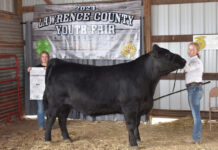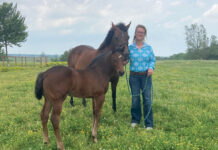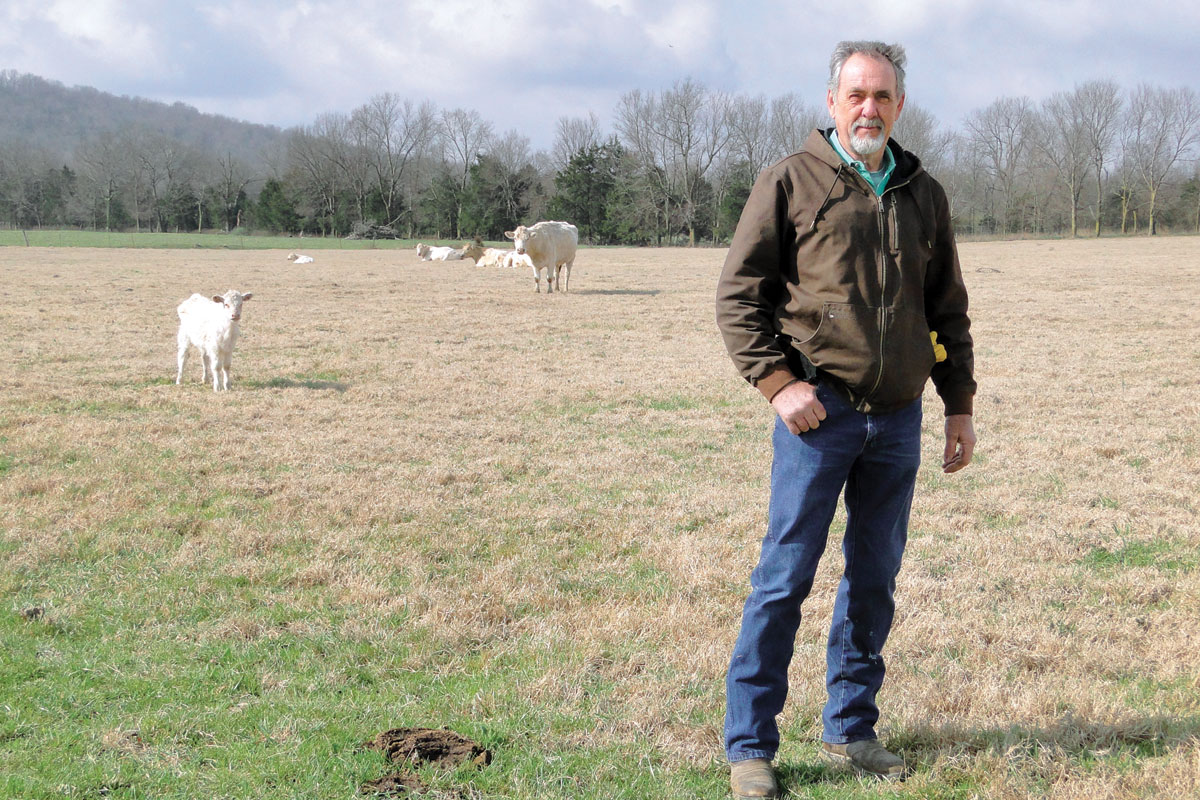
Hackberry Farm use wool to make various products and sell it locally as yarn
CUSHMAN, ARK. – Jessica Hogue had always been around animals of some kind, so it should surprise no one that she and her husband, Adam Hogue, are now farmers with up to 24 animals at a time. What might surprise some, however, is that they raise Shetland Sheep.
“My grandfather was a cattleman and an auctioneer,” Jessica said. “I would spend time with his grandpa while my mother and her sisters would help my grandma in her small grocery store.
“I’ve always had some kind of animal.”
The couple first moved to Nashville, Tennessee, but eventually they found themselves on their current land.
“We moved to Nashville, TN for Adam to go to anesthesia school, lived there five years before moving back to Arkansas. We bought land in Charlotte, Arkansas and had cattle there for about five years before we moved into town so Adam could be closer to the hospital. When he is on call, he has to be 15 minutes from the hospital and we lived too far out,” Jessica said. “That is why we lived in town but kept looking for acreage outside of town that was within his 15 minute window because we like living in the country.

“We found the 87 acres in Cushman in 2018, remodeled a small house on the property and lived here for almost a year before I bought the sheep in 2019,” she concluded. “We’ve since built a barn and a new house, we rent out the other one.”
Jessica’s dad started an Angus farm, and the younger Hogues bought some cattle, too.
“My dad has raised Registered Angus for years. When we moved to back to Arkansas from Nashville, we purchased our cattle from him,” Jessica said. “We didn’t dislike raising cattle. It’s just that when Adam was at the hospital, if something came up, I had to handle it on my own, which is harder to do on your own with a larger animal. Sheep are small and I knew I could handle them on my own if Adam was not here.
“We loved that they are smaller animals, good mothers, and easy to take care of.”
The Hogue’s farm, Hackberry Farm, was officially opened in 2019 with just a few Shetland Sheep but the flock rapidly expanded.
“It went from four to 10 really fast,” she said. “We now have 18 and sometimes up to 24.”
Jessica said that they enjoy the sheep’s personalities more than cattle and that the babies are extra cute.
“They are a lot more personable than cows,” she said. “They wag their little tails when they are happy, but some are more aloof.”

Their sheep are both NASSA and FFSSA-registered. NASSA stands for North American Shetland Sheepbreeders Association, and FFSSA stands for Fine Fleece Shetland Sheep Association.
According to the NASSA website, Shetlands are an ancient breed from Scotland.
“The roots of the Shetland Sheep go back over a thousand years, probably to sheep brought to the Shetland Islands by Viking settlers. They belong to the Northern European short-tailed group,” according to the website. “Shetlands are one of the smallest of the British sheep. Rams usually weigh 90 to 125 pounds and ewes about 75 to 100 pounds.”
The sheep are also relatively easy to manage, including their diet. At Hackberry Farms, they eat primarily grass in the summer and hay in the winter. They also receive mineral supplements. They rotate between several different paddocks on the Hogue’s 2.5 acres, Jessica said.
The ease of care works well because Jessica is busy caring for the family’s children, and Adam is a nurse anesthetist.
A knitter for 20 years, Jessica was also excited to learn that Shetlands come in 11 main colors.
“I knew I wouldn’t have to do a lot of dyeing (of the wool),” she said.
She took a class to learn how to process the wool so it’s ready to knit.
“I took a crash course to see if I would be interested,” she said. “It was a three-day sheep to shawl class at the Ozark Folk Center in Mountain View.”

Another reason they chose the Shetland sheep is because it seemed like kids would also like them. The Hogues not only raise their sheep, but they also spend many hours educating people on the breed, farm life, and processing the wool.
“We speak to various student groups,” she said. “There are several homeschool groups that come out to the farm.
“We talk to them about various jobs related to the wool industry.”
Jessica also enjoys showing farm guests of all ages the wool processing process and the work that goes into making items from wool.
“People don’t realize how much goes into the entire process,” she said, adding that she usually only makes hats and smaller items to sell and makes her own sweaters. “I don’t make anything big for others.”
“It’s not worth it to sell sweaters with as much time that goes into it,” she said.
The entire process takes about 10 months and includes having the sheep sheared each spring and processed out of state. This allows her time to get items ready for the big Christmas sales.
“We shear some on our own, but mostly, we hire someone,” Jessica said. “It’s about $10 a head, and it’s totally worth it.”
Jessica shares information about the wool process on their Arkansas Grown page.
“In the spring, raw wool is available after shearing which occurs in March. In the summer, lambs are available after weaning in July. While some wool is kept on farm for hand processing into yarn, most of our fleece is sent to Round Barn Fiber Mill in Durand, Ill. to be spun into yarn.”
Jessica sells her wool products through social media, on Etsy, and at the local Bird Cage Vintage Market. She also sells yarn at Yarn Kandy.








